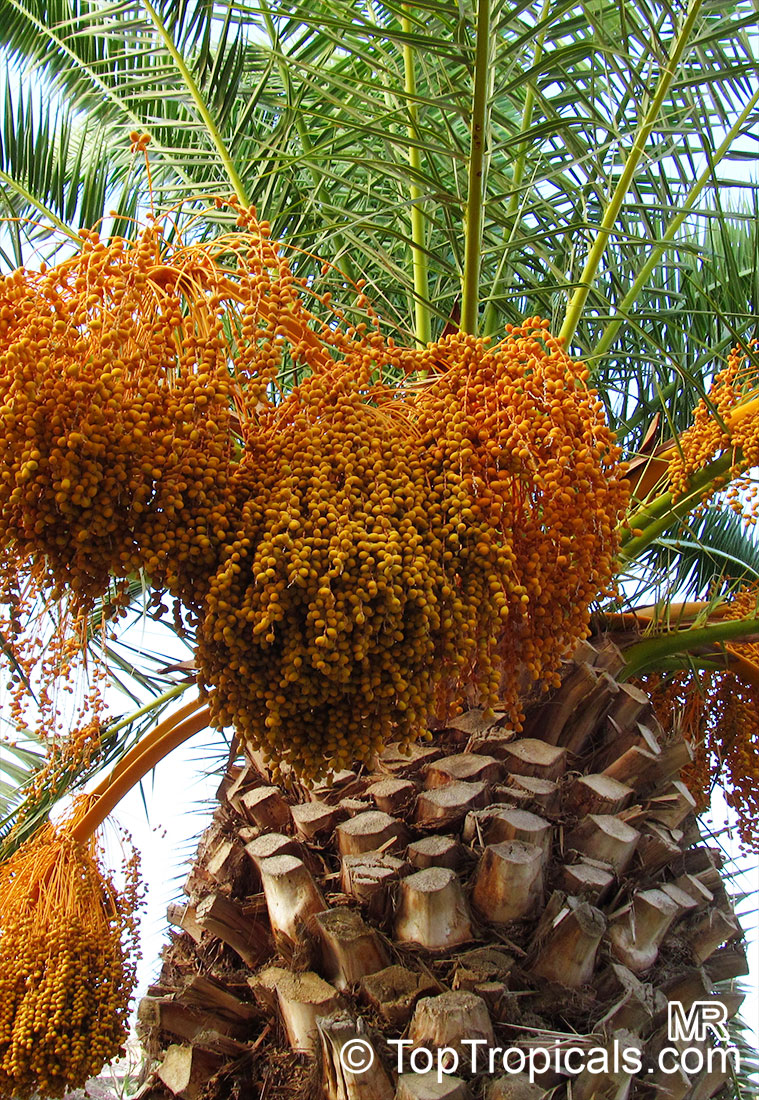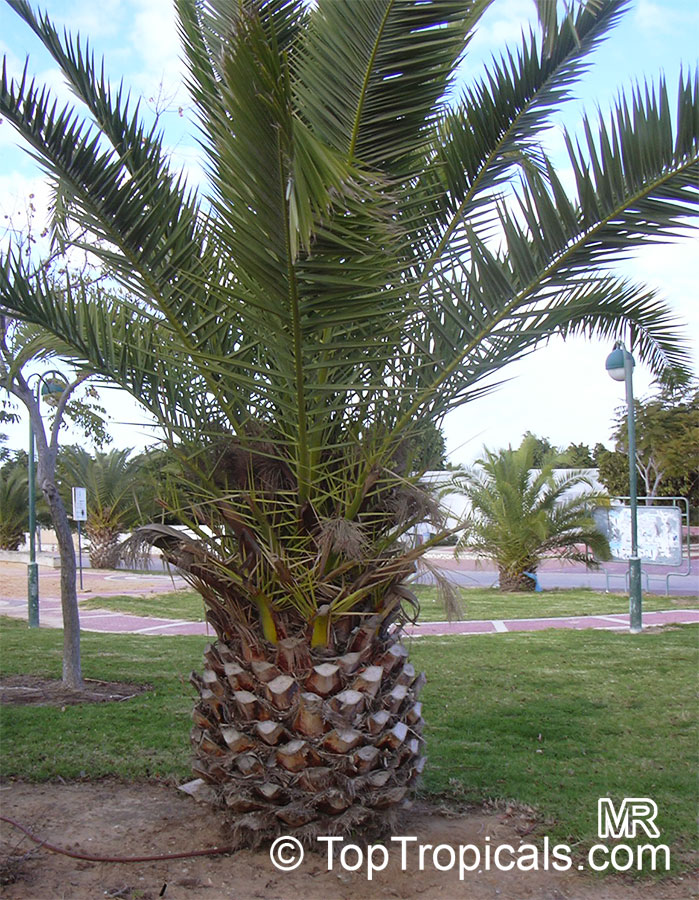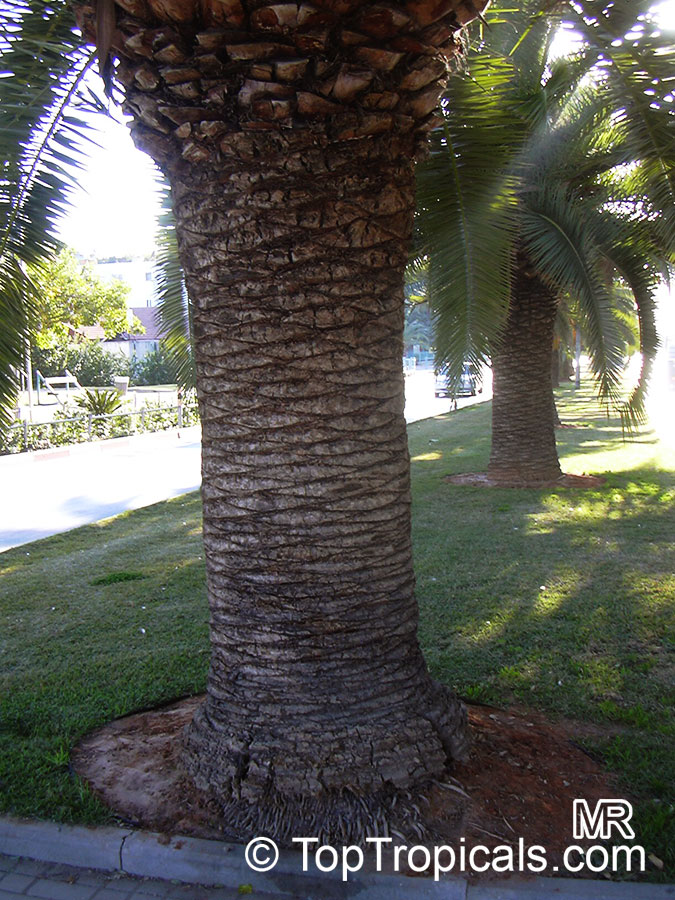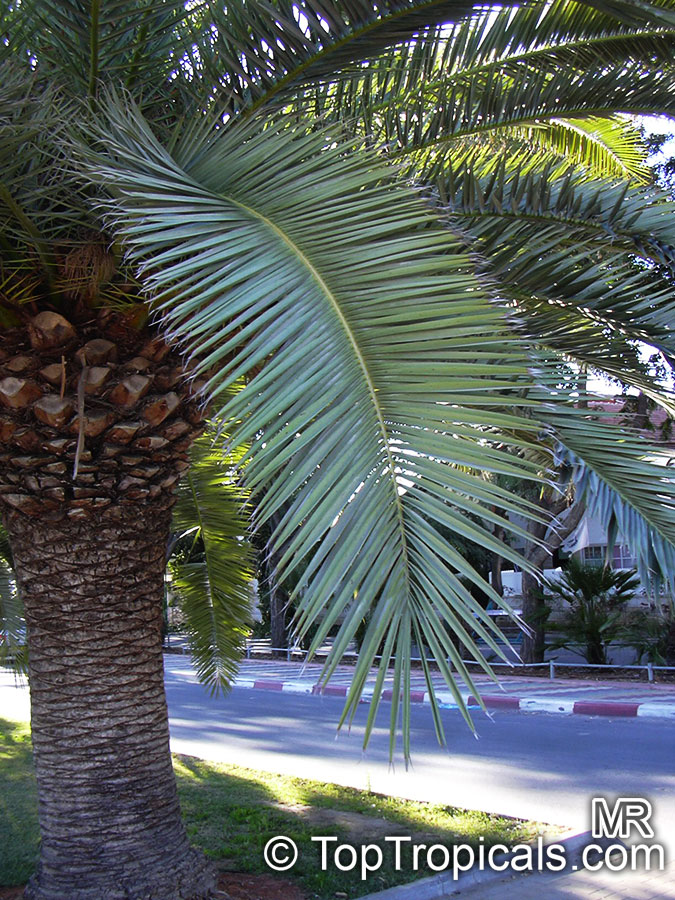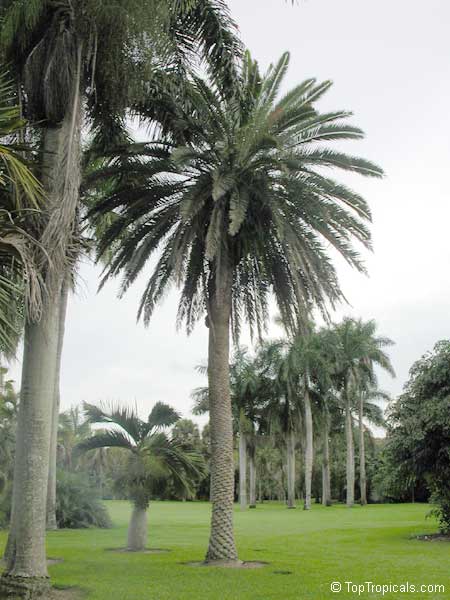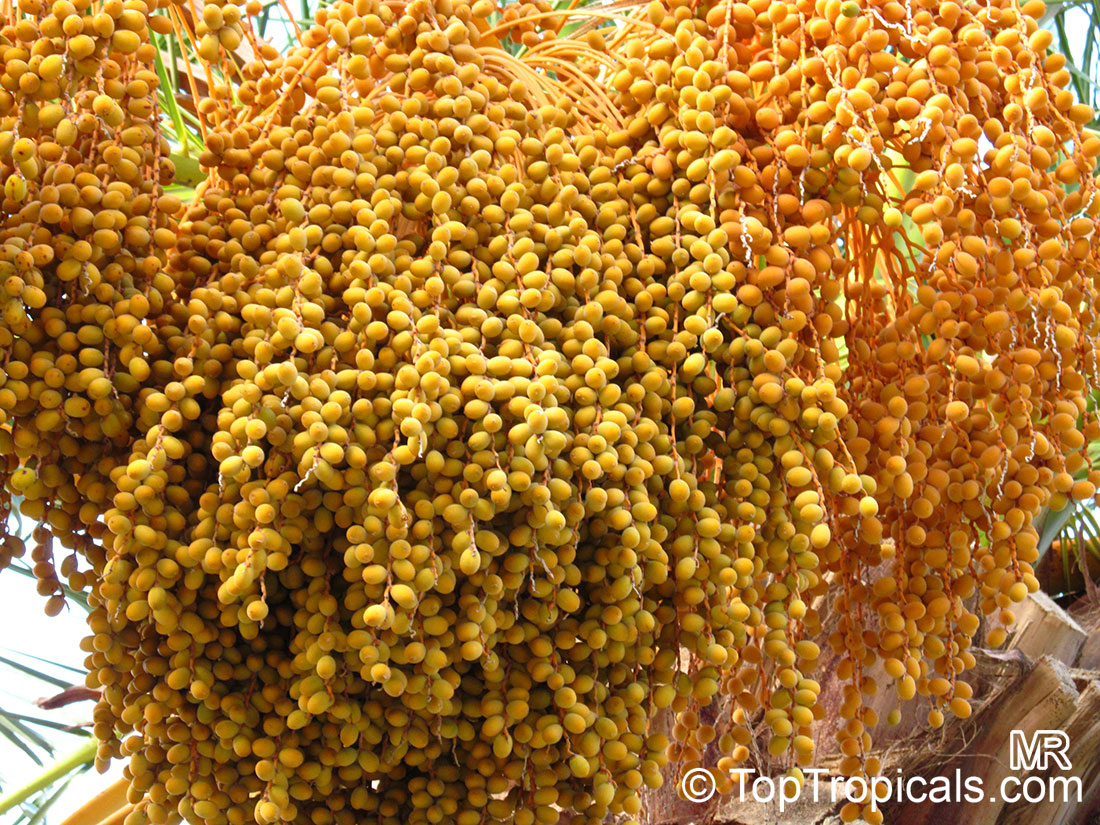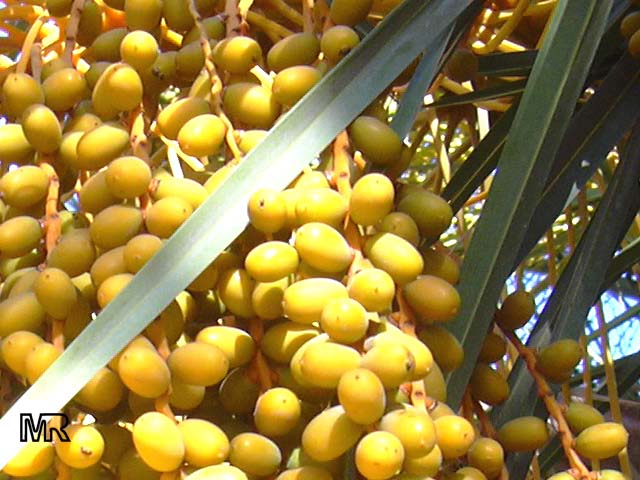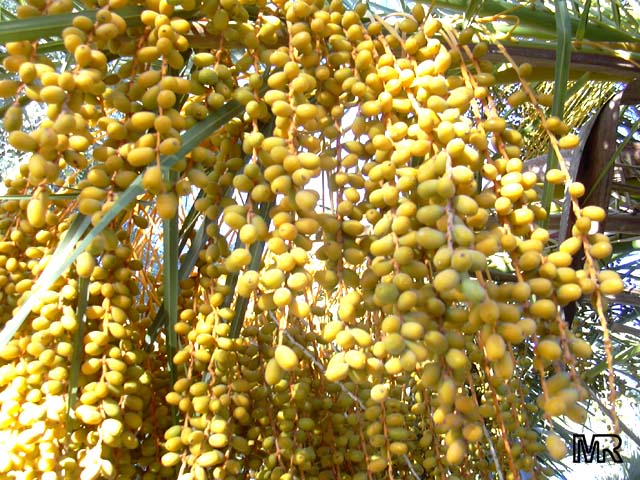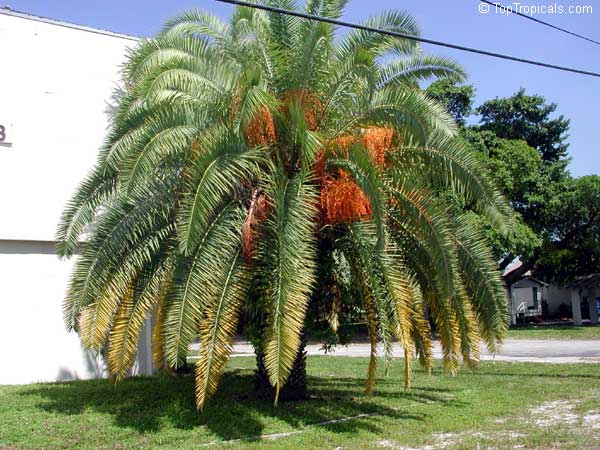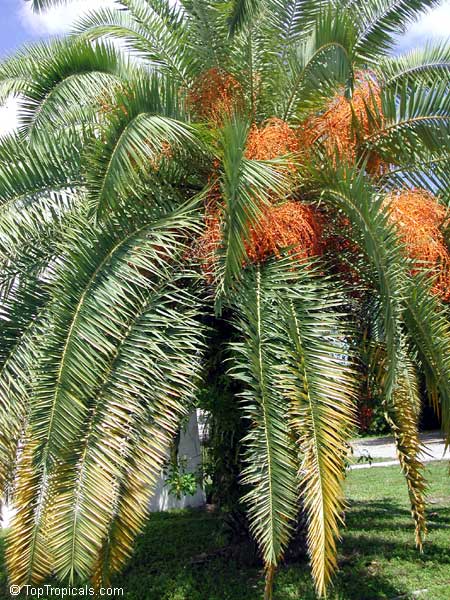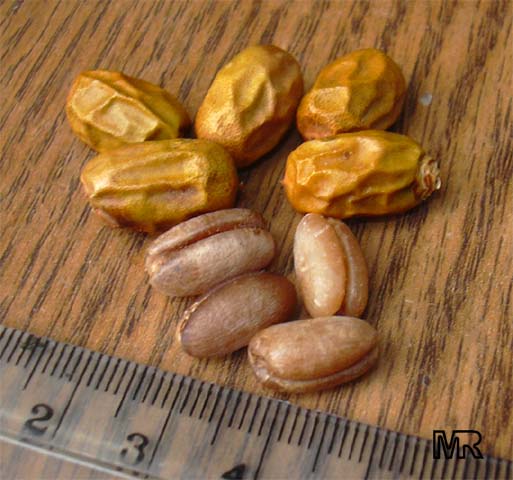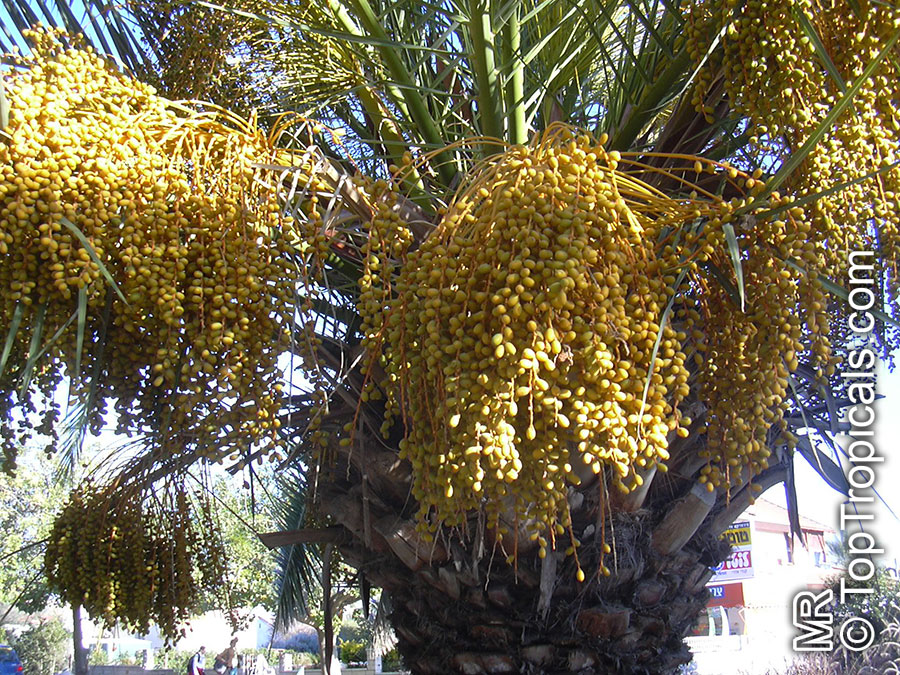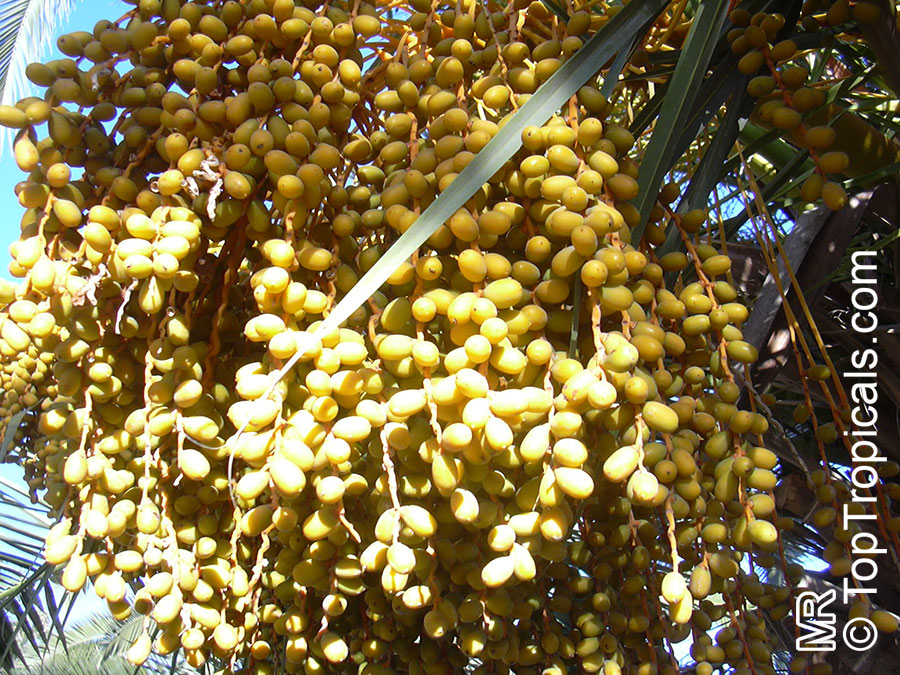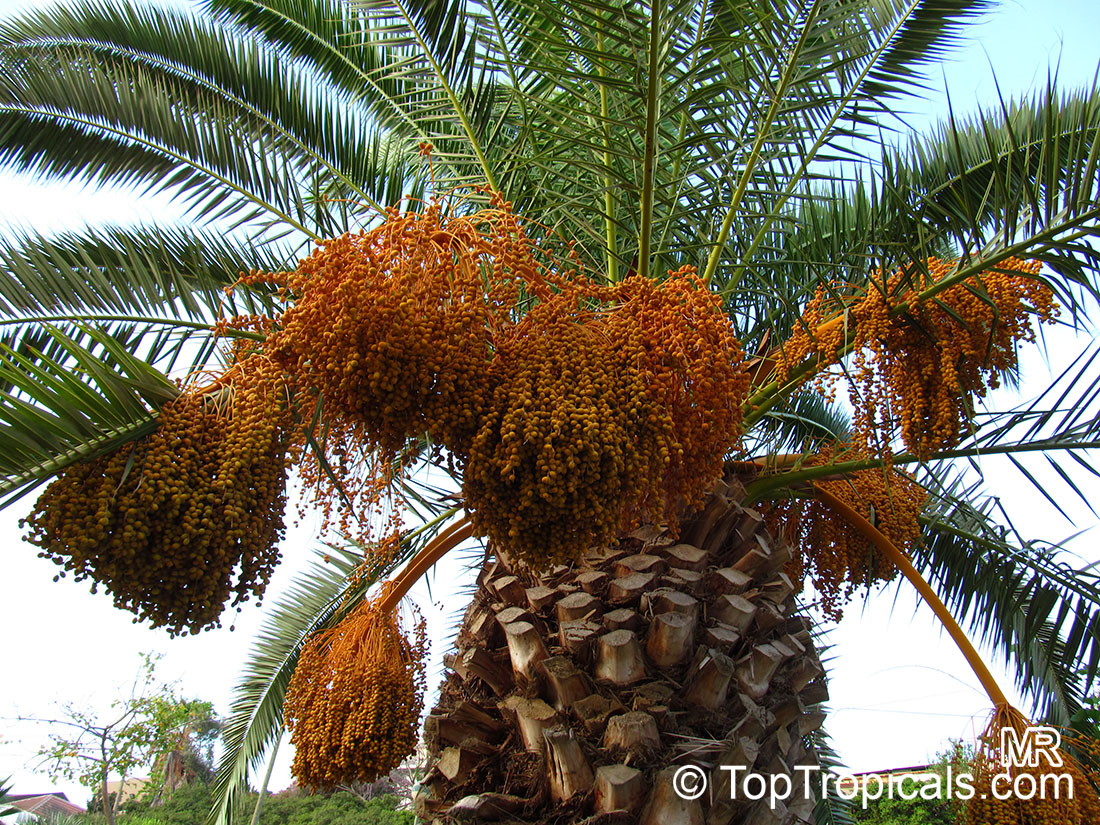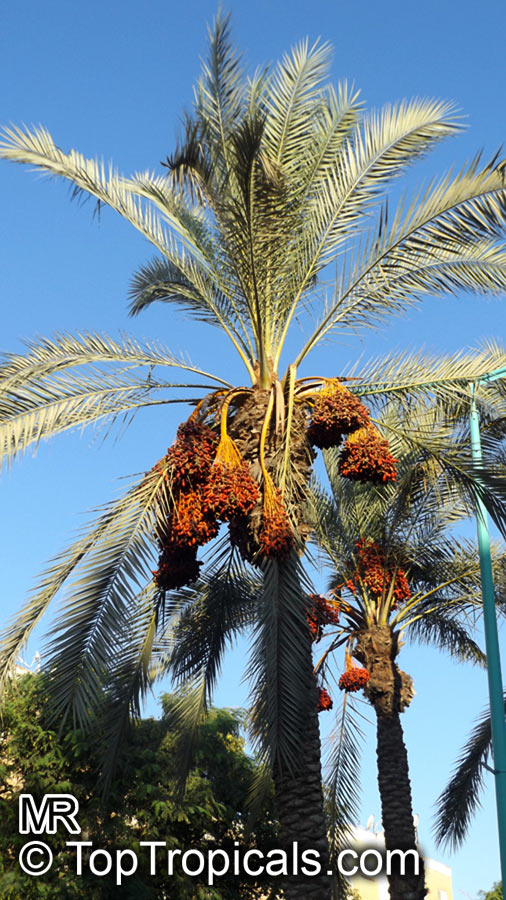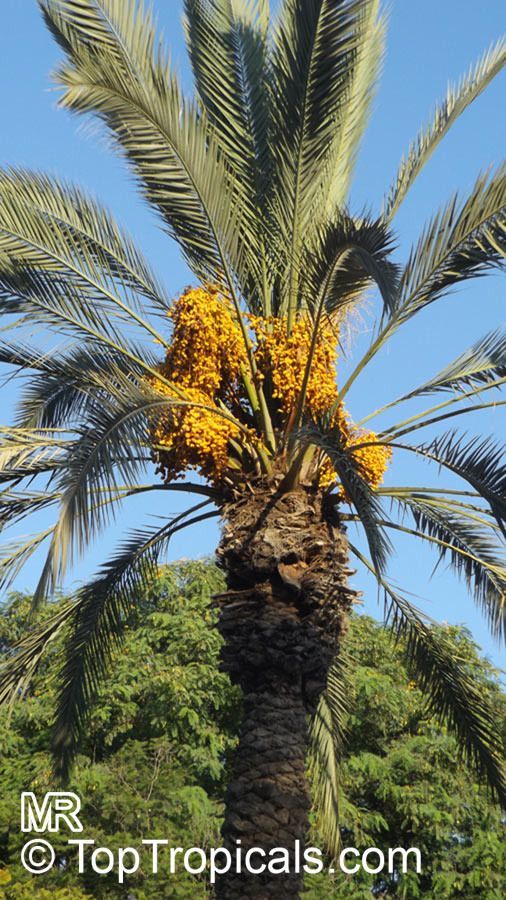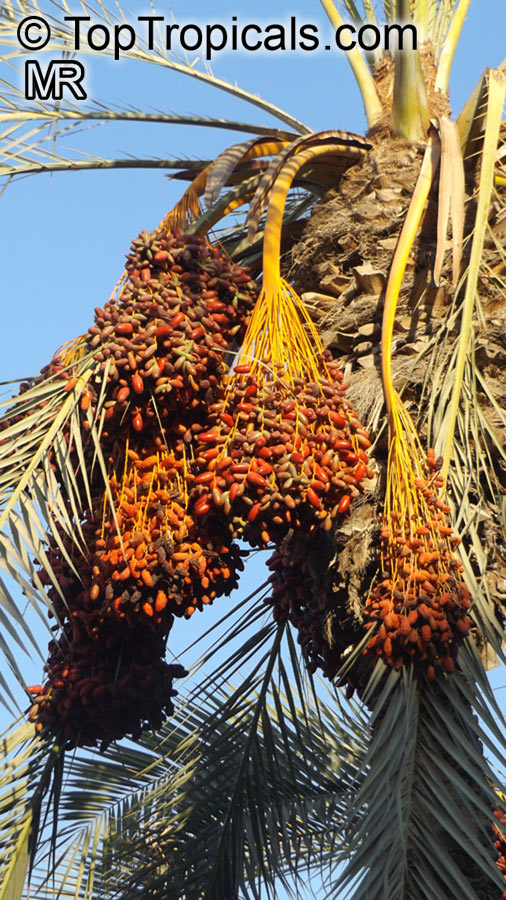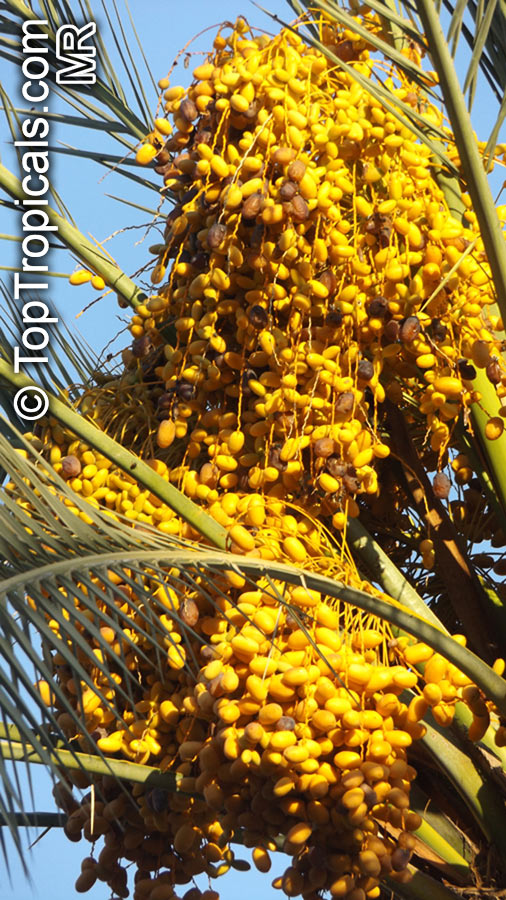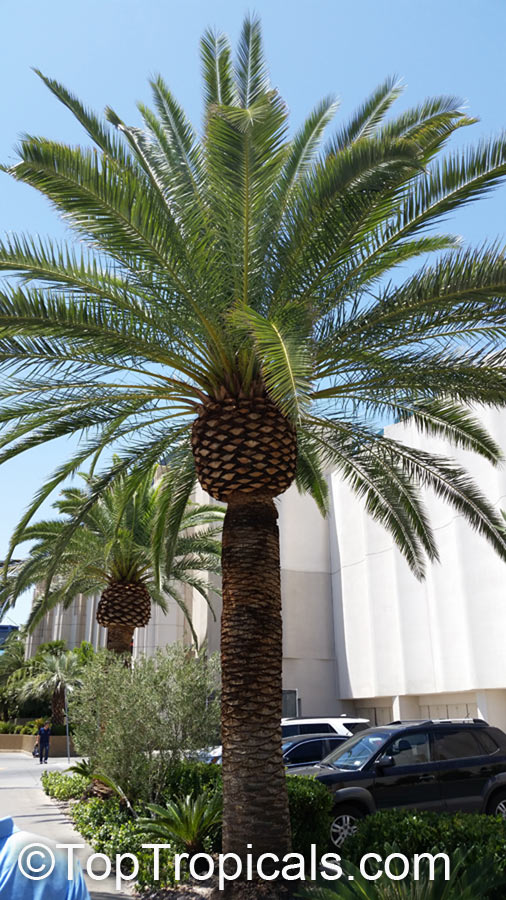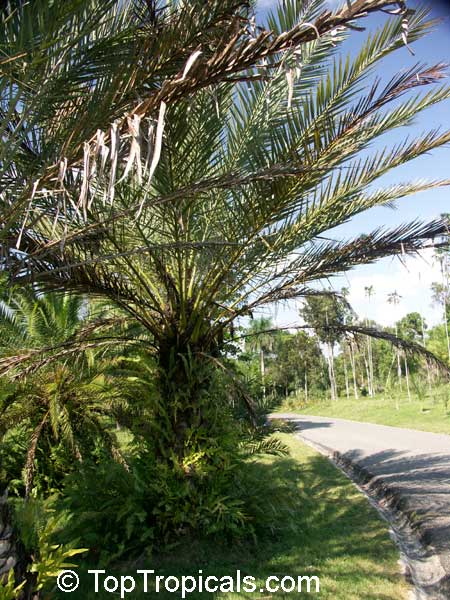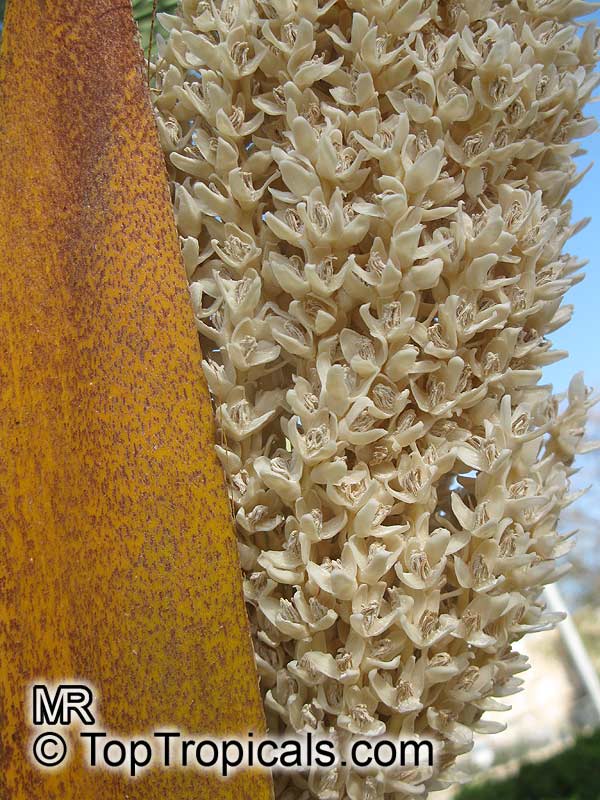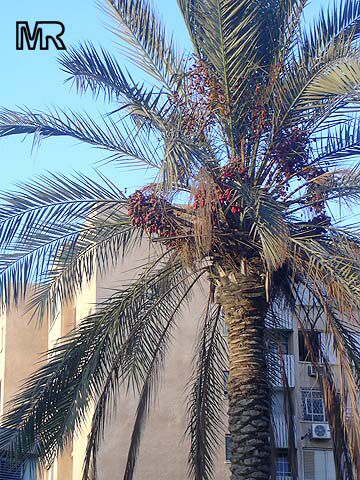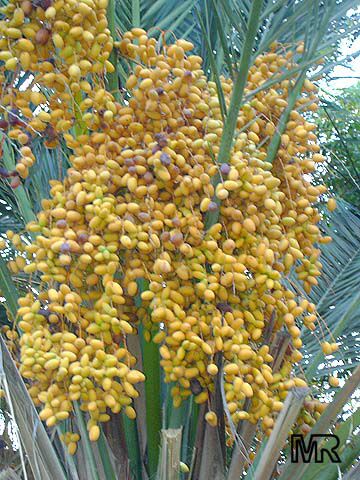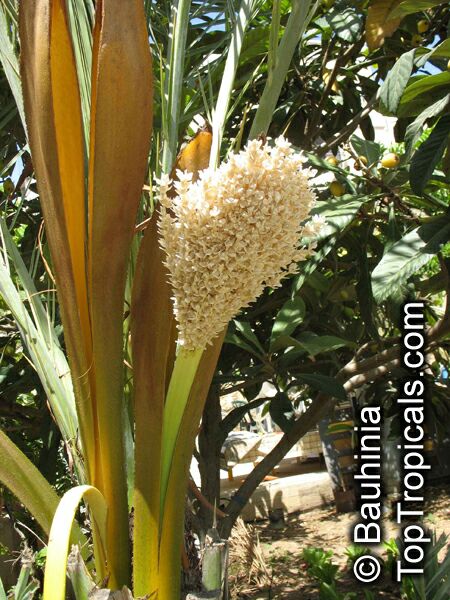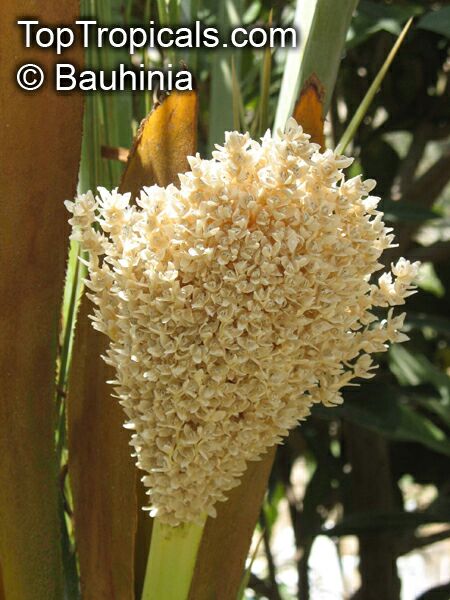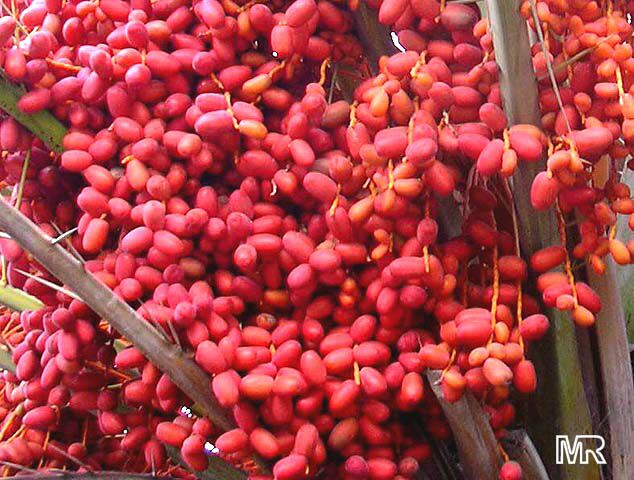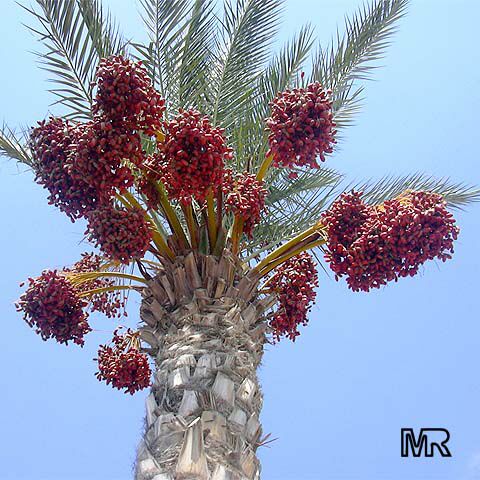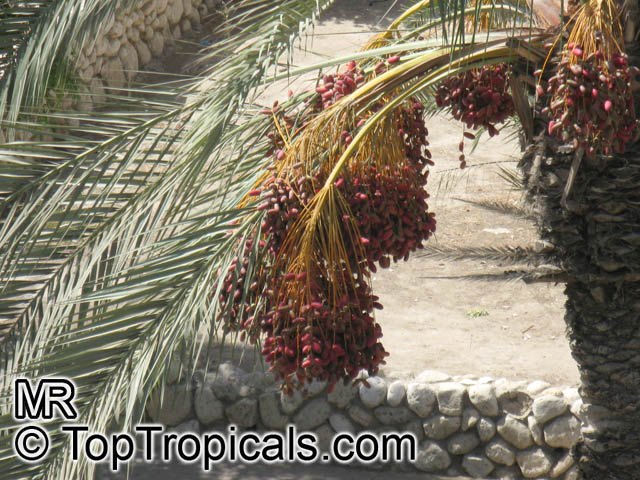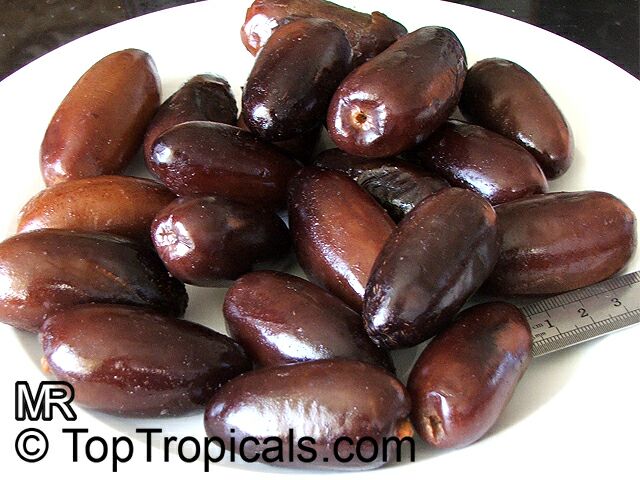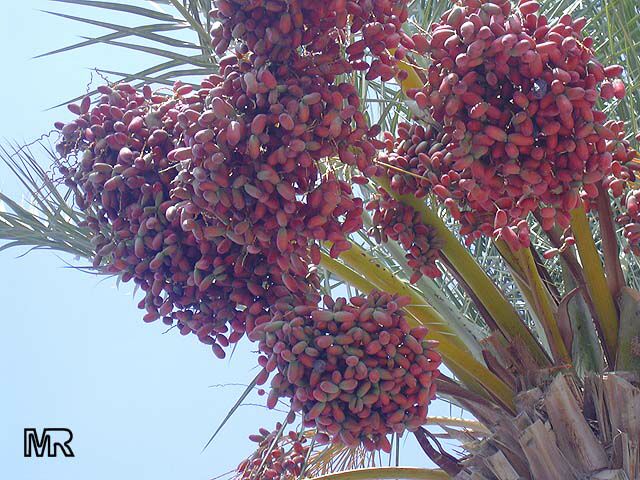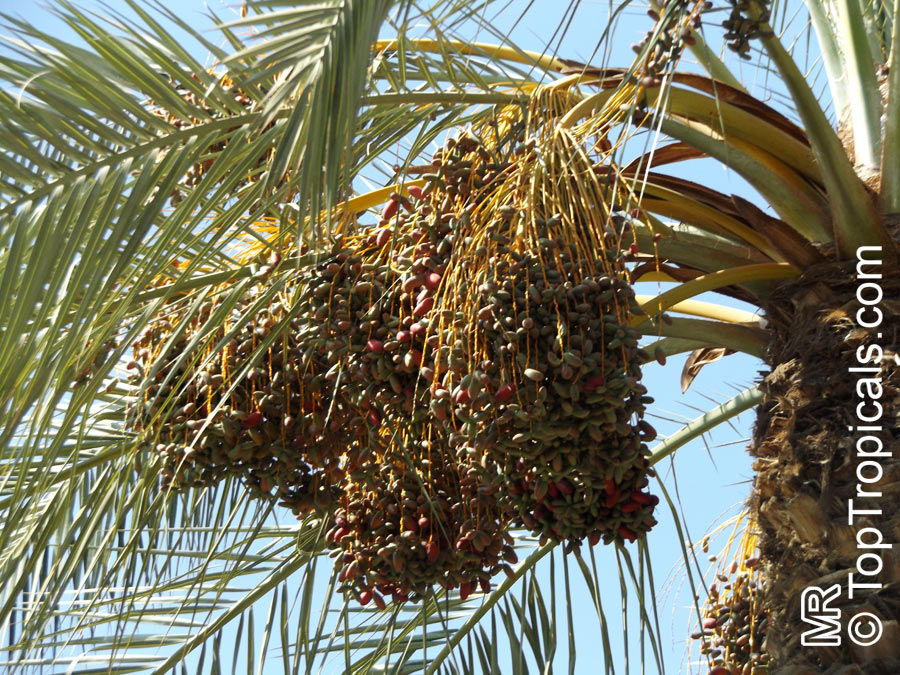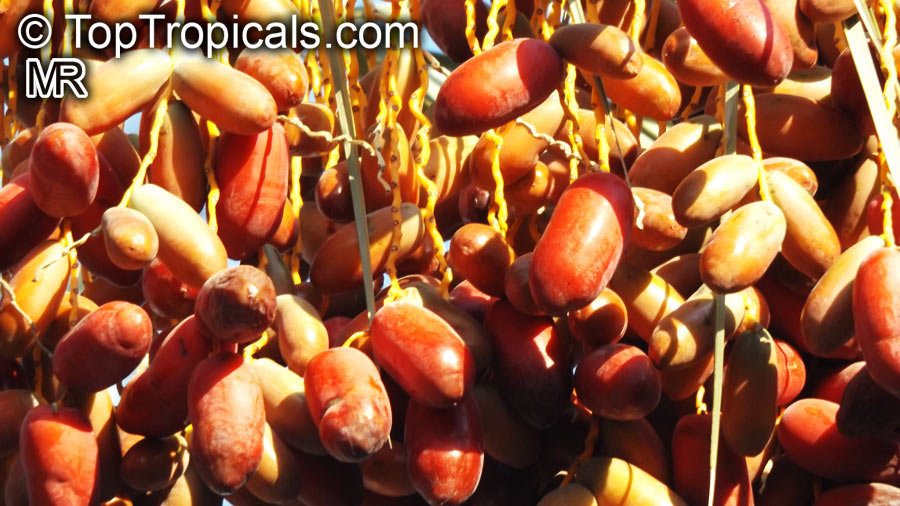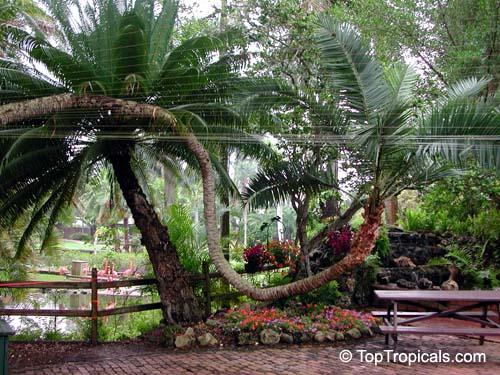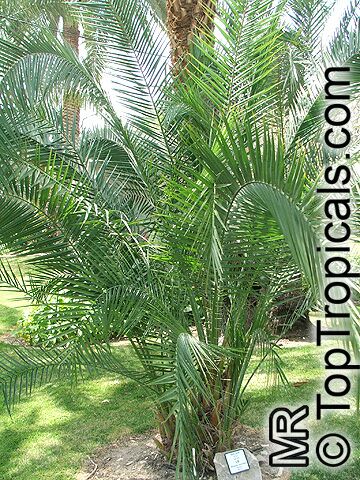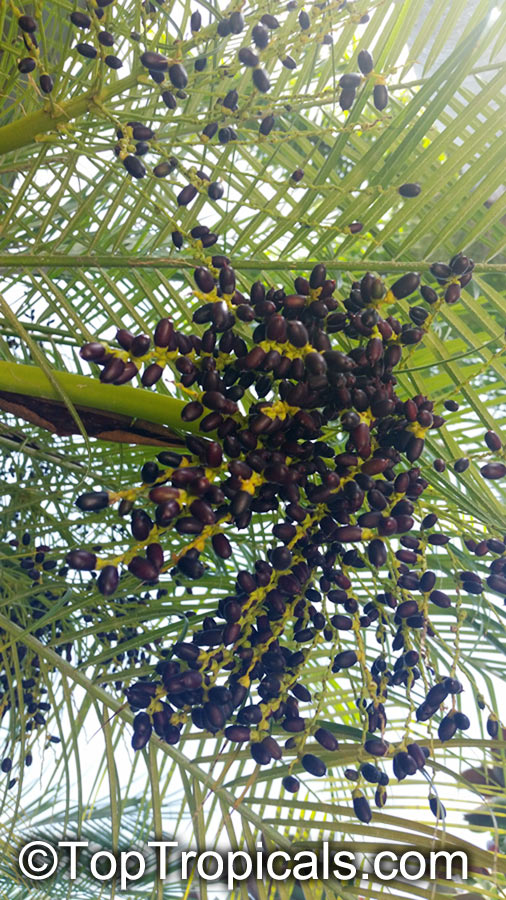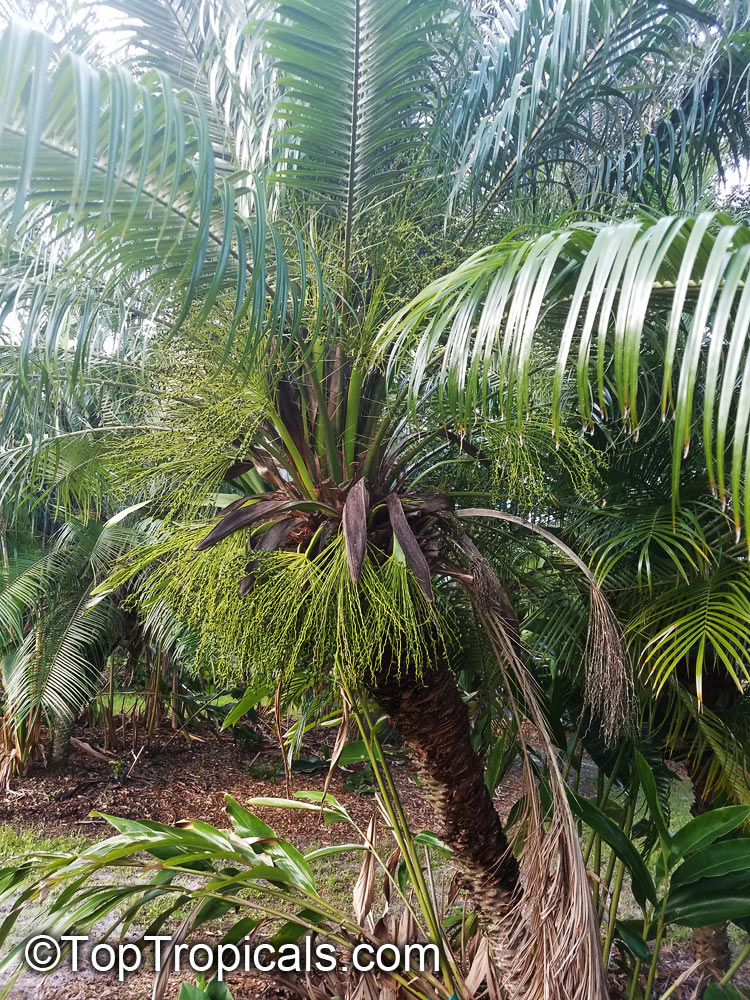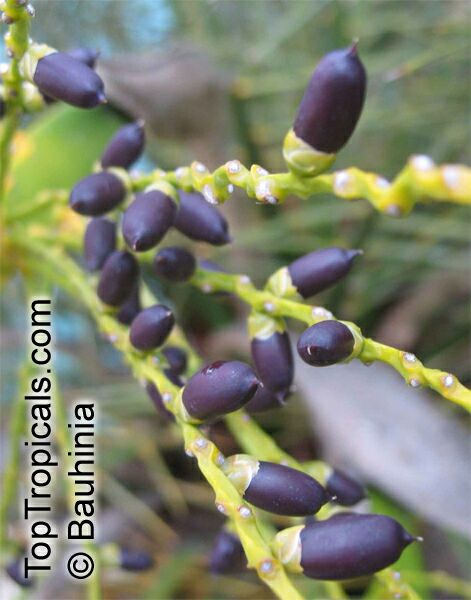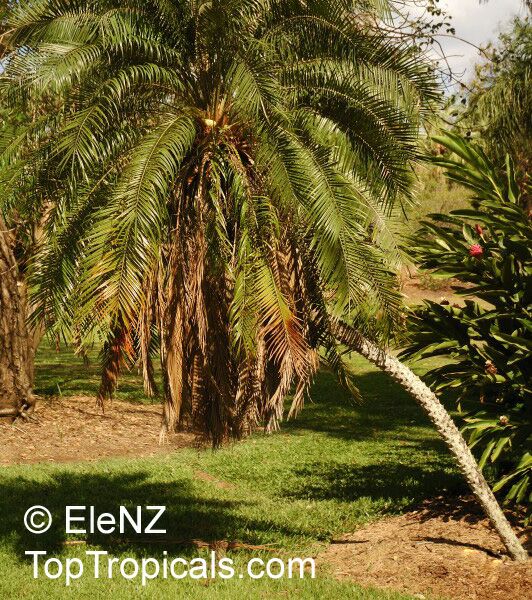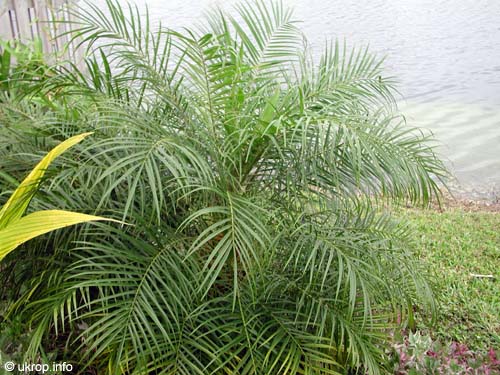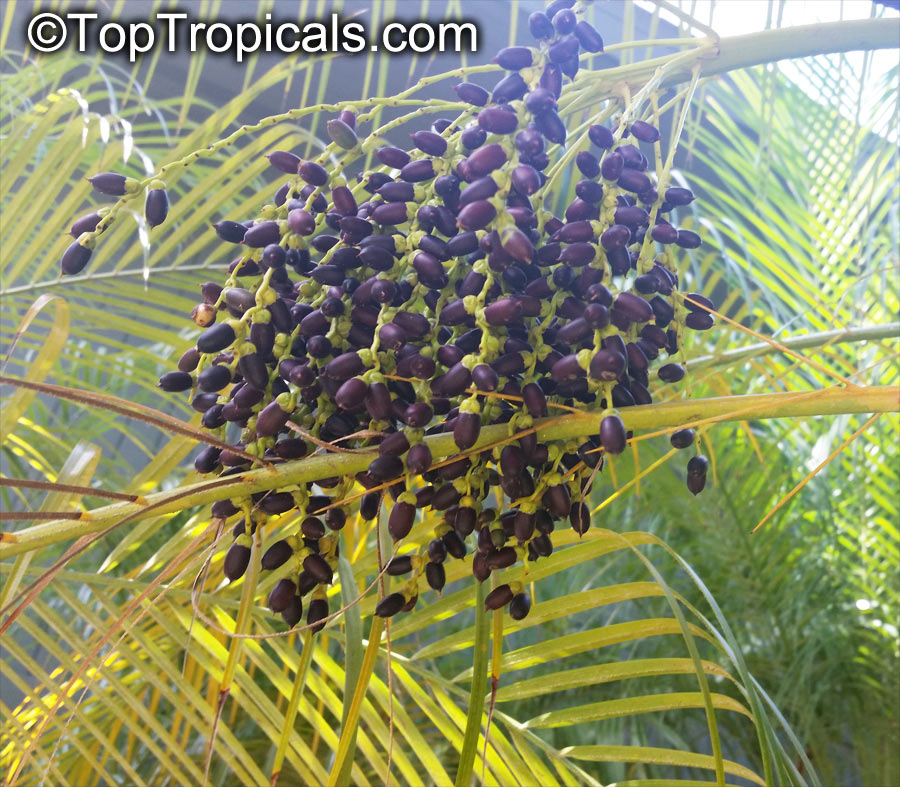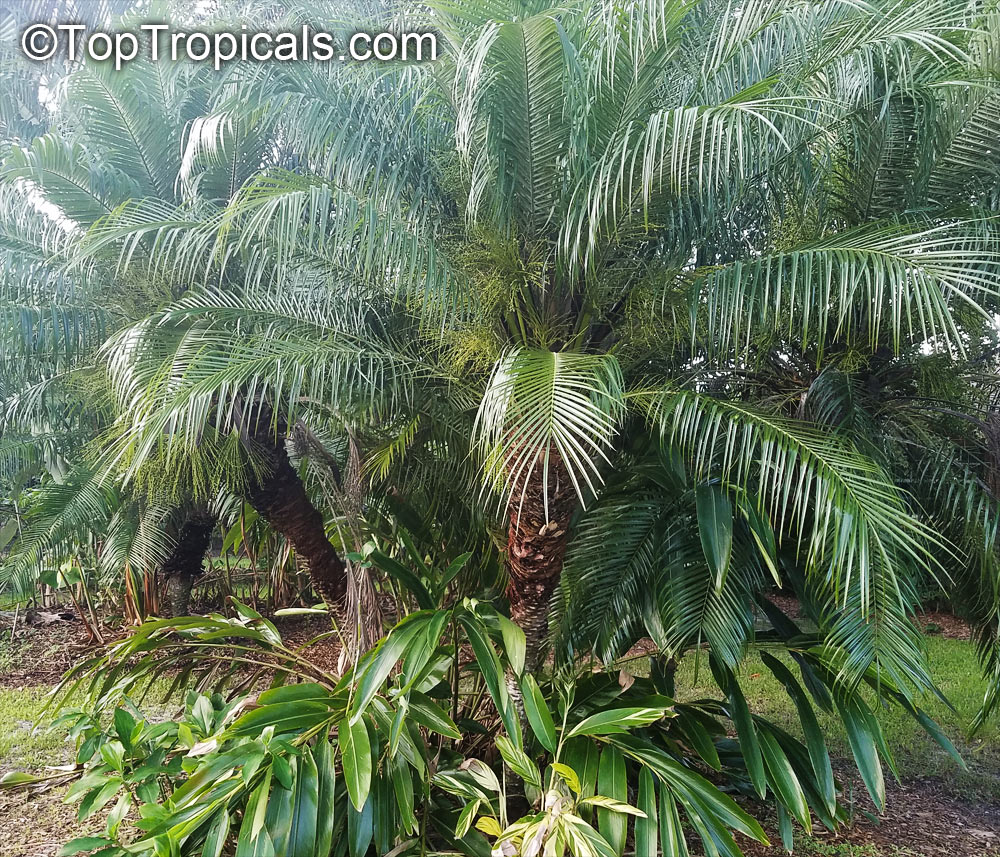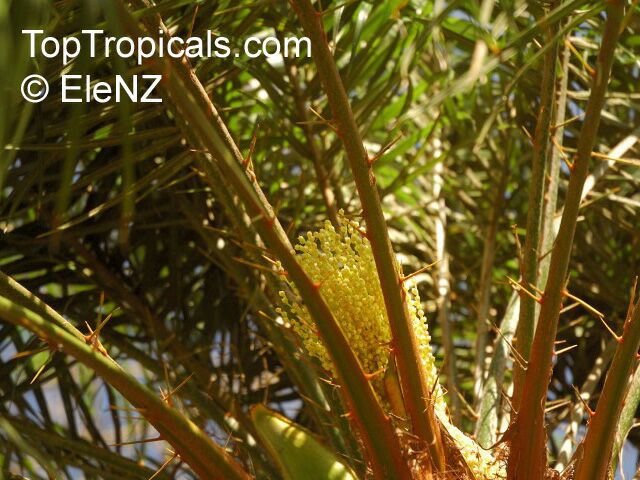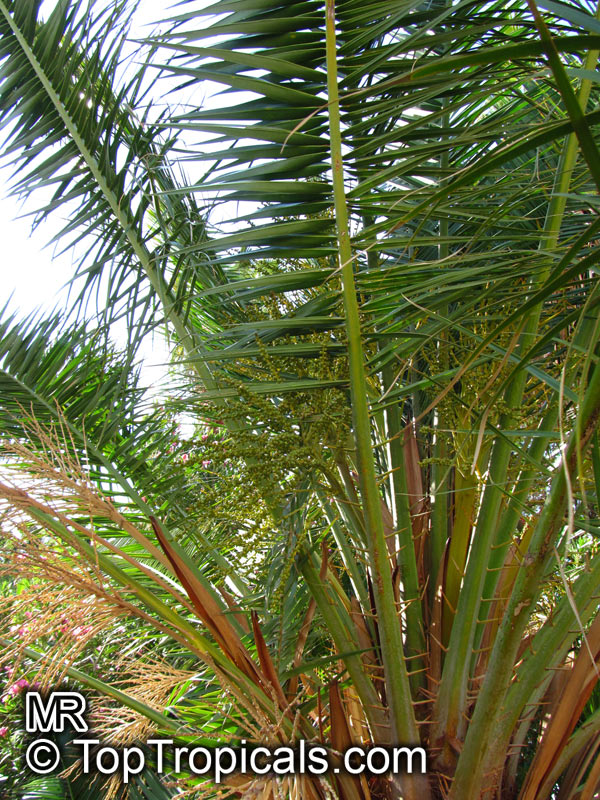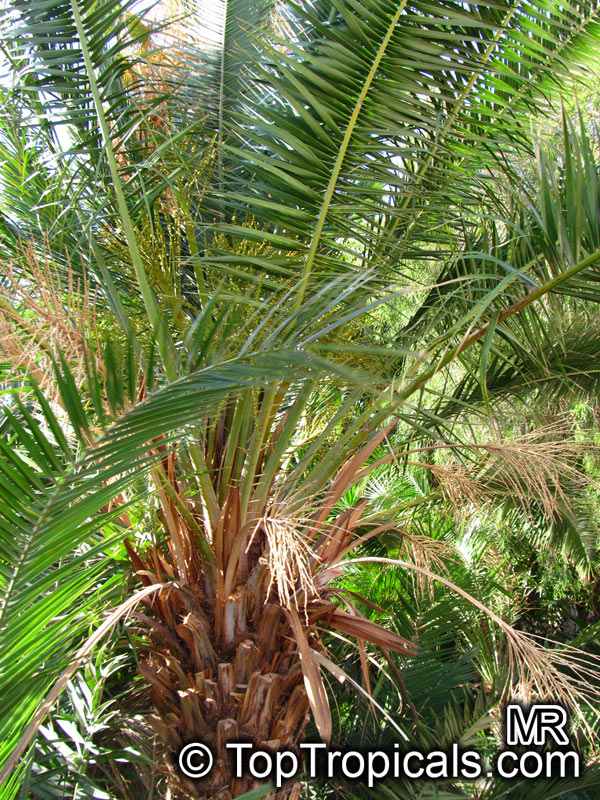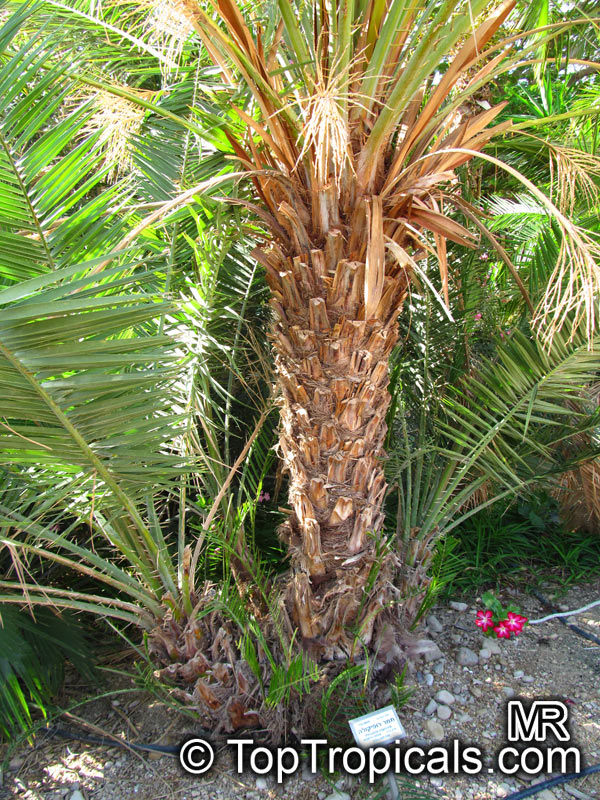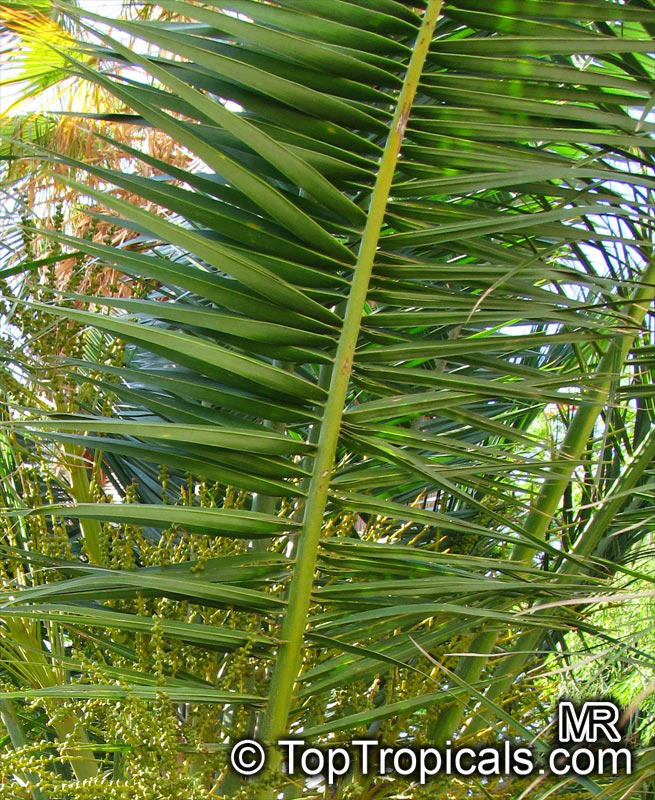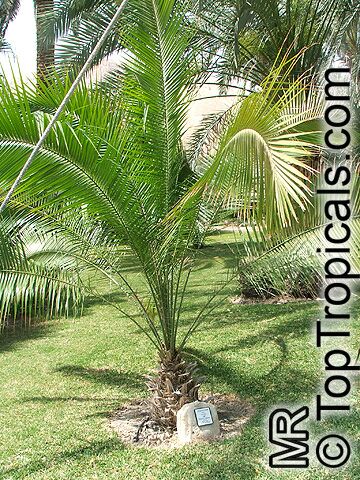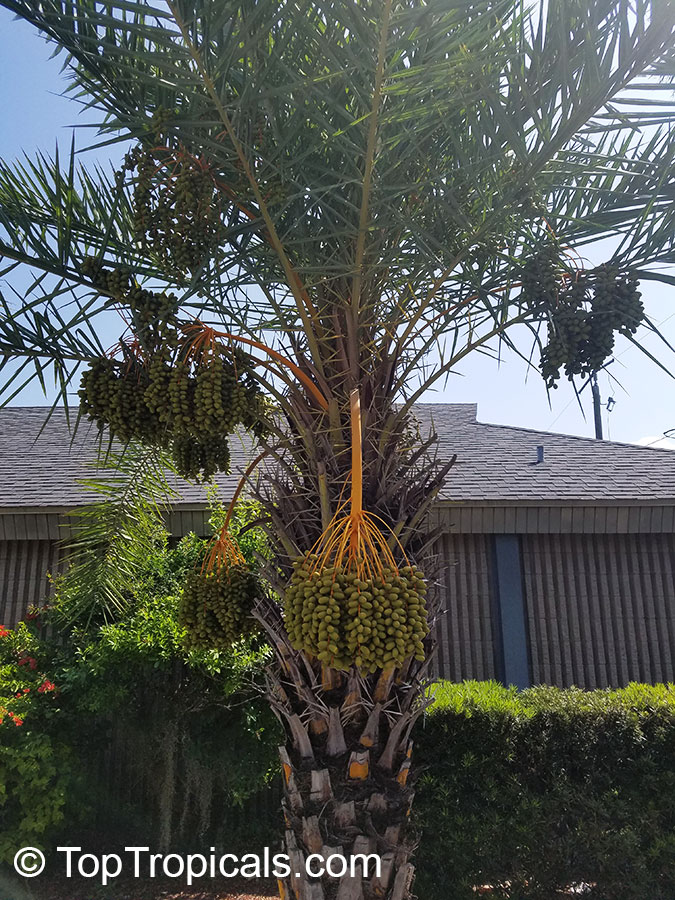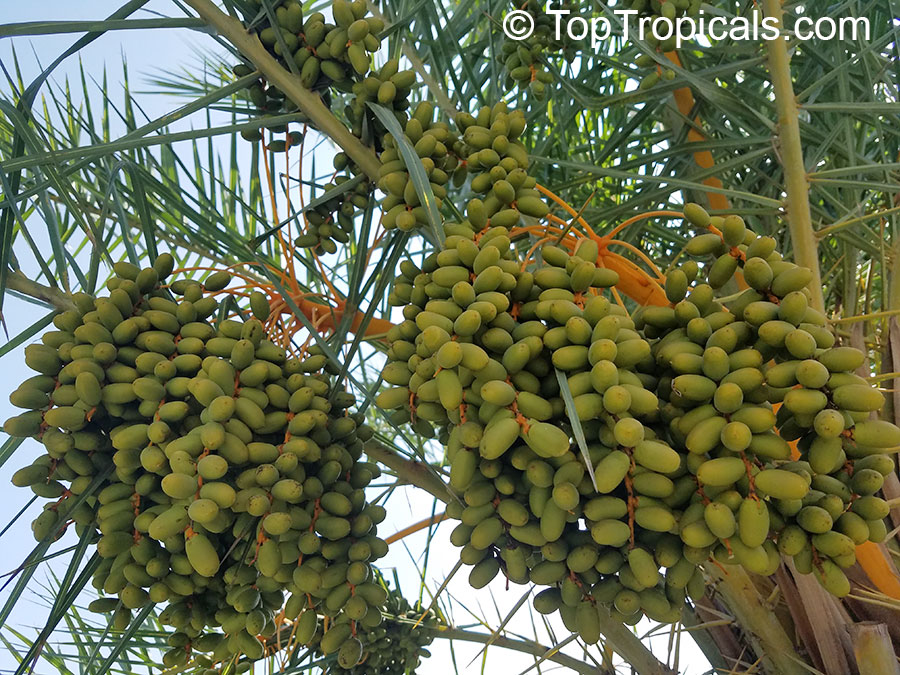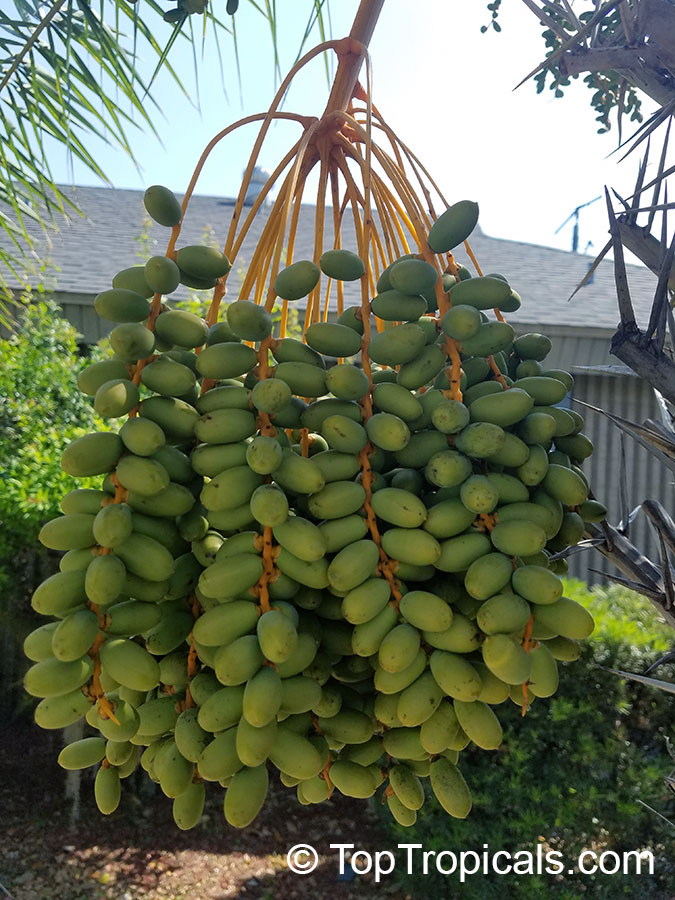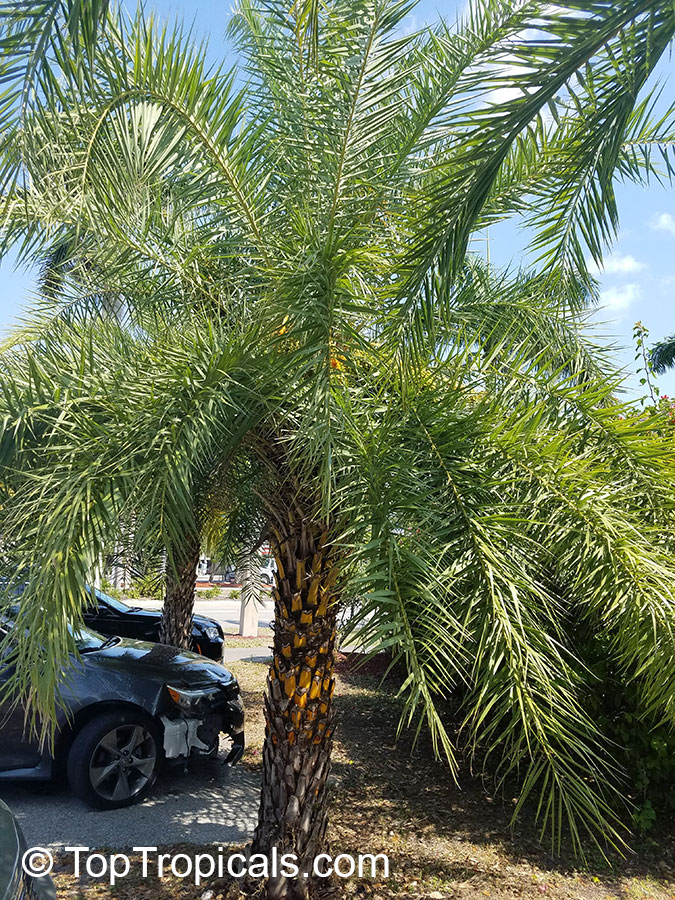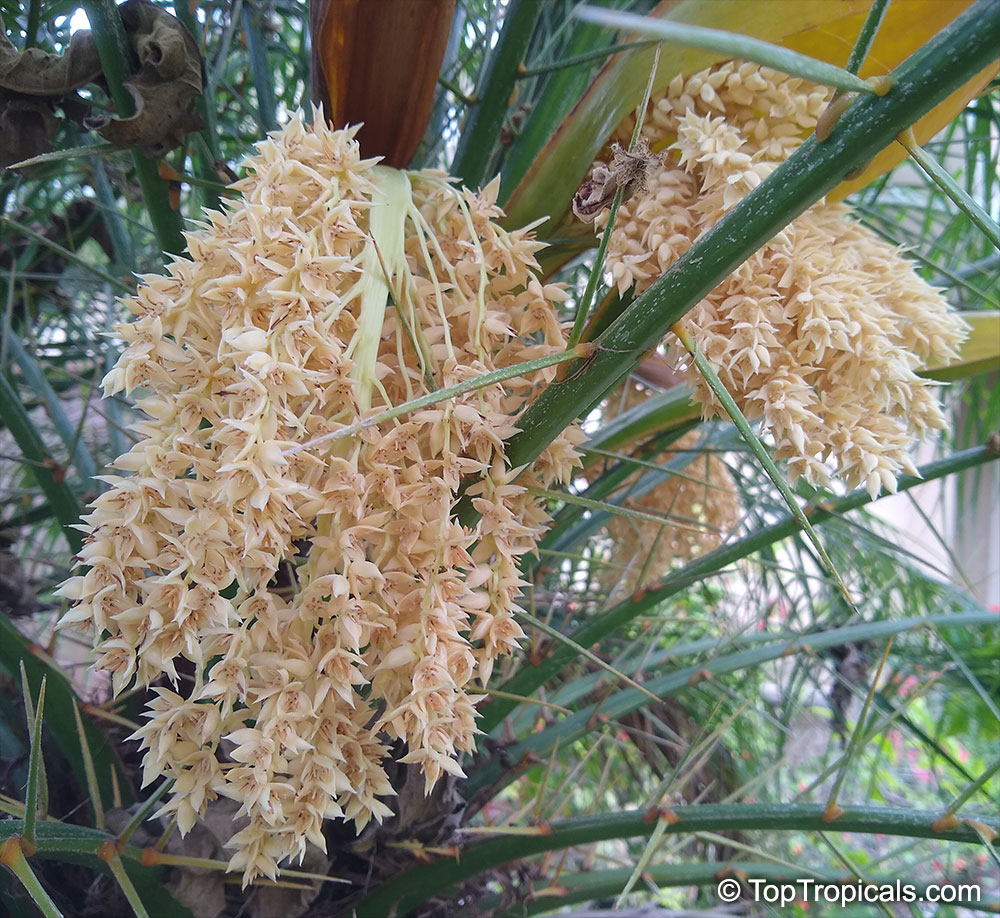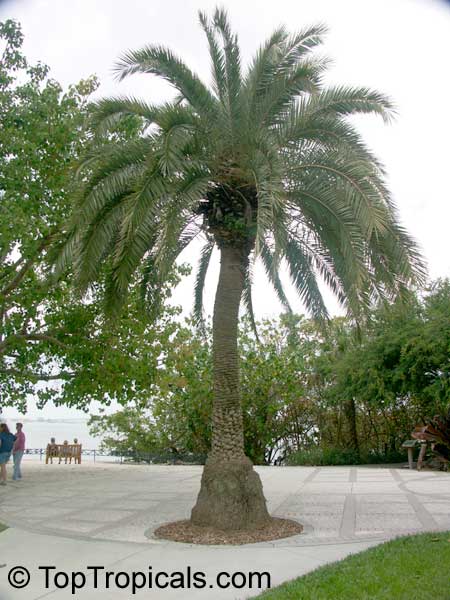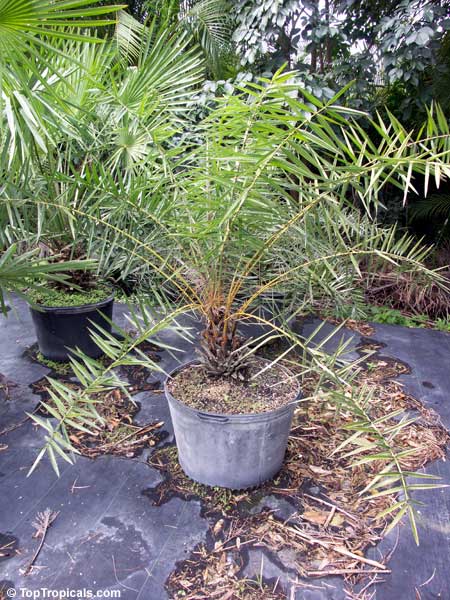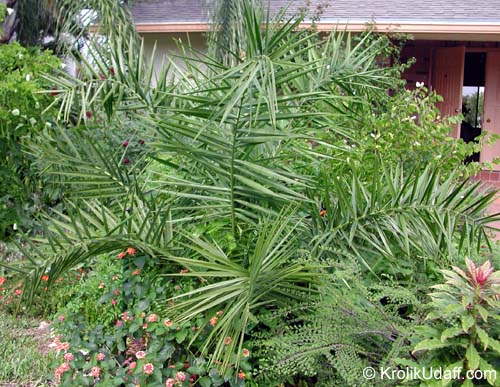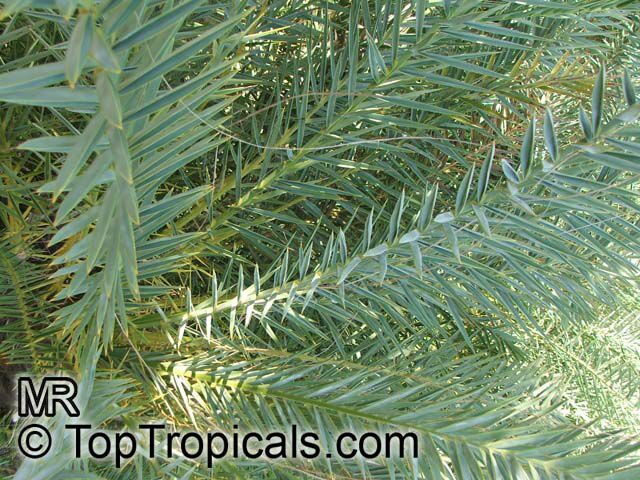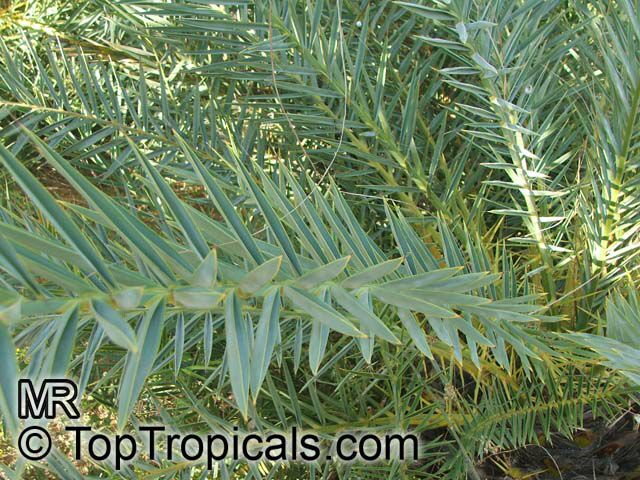Phoenix, date, palm - Plant Encyclopedia Results
Top Tropicals Plant Encyclopedia
| Number of plants found: 8 |
Botanical name: Phoenix canariensis
Common name: Canary Island Date Palm
Family: Arecaceae / Palmae
Origin: Canary Islands





Trees are vulnerable to ganoderma rot, lethal yellowing disease and leaf spot. . Dates are infinitely good for you and loaded with all kinds of vitamins, and date palms are lovely trees. If you want to start your own date palm, don't make the mistake of using pasteurized dates that have been steamed and preserved with chemicals.Get raw dates, that haven't been tampered with, they are usually available at health food stores. Break open the date and wash several pits. Plant them 1 to 3 inches deep in a starter mix. The time for germination varies, but it could be as long as two months, so don't give up in disgust. Keep the container in a warm place with good humidity. (Placing the entire pot inside a closed plastic bag is a good way to maintain high humidity.) In most plants the seed cotyledon that acts as a reservoir for food usually emerges from the top of the seed and sprouts directly out of the ground-not so with the date. It comes from the bottom and travels through the soil (like a root), coming up many inches later. When this root is about an inch long above the soil, it is time to transplant to a large tub of rich soil so the plant can grow on. In a few weeks the sprout will be joined by another, and presto, fronds! Your date is on its way. Give the plant plenty of sun, good moisture, and occasional feeding to keep it growing.
Botanical name: Phoenix dactylifera
Common name: Date Palm
Family: Arecaceae / Palmae
Origin: Middle East






Fresh dates, the fruit of the Date Palm (Phoenix dactylifera), are widely grown in warmer climates, such as the Middle East, to the point where they are a staple food in many cultures. Dried dates are also widely enjoyed in a number of other cultures. Dates contain high levels of vitamin C and dietary fiber, as well as naturally occurring sugars, including fructose, glucose, and sucrose. Date palms can produce up to 150 lbs of fruit each season, depending on the tree's size and the local climate. The fruit is usually thin-skinned, yellow-orange in color, and oval or oblong in shape. Though dates can be eaten fresh or dried, most people prefer the sweet taste and chewy texture of dried dates. Whether you're eating a fresh date or a dried one, this sweet, nutrient-dense fruit is an excellent addition to your diet.
The palm is dioecious, meaning each plant is either male or female, not both, as in most palms. A very hardy palm, which will grow almost anywhere, apart from very cold areas, and only unconditional requirement is full sun. Not particular about soil and will even grow in poor soils. Prune suckers annually to create single trunk specimens. Although a drought resistant desert plant, the date palm has deep roots that typically seek out subterranean water sources. Provide regular irrigation for best look and faster growth.
Botanical name: Phoenix reclinata
Common names: Reclinata Date Palm, Senegal Date, African Wild Date
Family: Arecaceae / Palmae
Origin: Africa, Zambia, Madagascar and the Comoro Islands





The Senegal Date Palm is variable in shape and form but tends to grow as clumps composed of multiple stems reaching 25 ft to 50 ft in height. These slender stems are covered with brown fiber and tend to curve away from the center of the clump in graceful arcs. The Senegal Date Palm readily hybridizes with the many other species of Phoenix that are found in the landscape. The fruit, called a date, follows the female flower. It is similar to the dates we buy in the store but is smaller and has less flesh and is mostly seed - they also don't taste very good although they are edible. Break open the date and wash several pits. Plant them 1 to 3 inches deep in a starter mix. The time for germination varies, but it could be as long as two months. Keep the container in a warm place with good humidity. (Placing the entire pot inside a closed plastic bag is a good way to maintain high humidity.) In most plants the seed cotyledon that acts as a reservoir for food usually emerges from the top of the seed and sprouts directly out of the ground-not so with the date. It comes from the bottom and travels through the soil (like a root), coming up many inches later. When this root is about an inch long above the soil, it is time to transplant to a large tub of rich soil so the plant can grow on. In a few weeks the sprout will be joined by another. Give the plant plenty of sun, good moisture, and occasional feeding to keep it growing.
Botanical name: Phoenix roebelenii
Common name: Pigmy Date Palm
Family: Arecaceae / Palmae
Origin: Laos







A small (even miniature) feather palm, from Laos and southeast Asia, with a slender trunk. Hardy to around 24°F for a short time. Likes lots of water and fertilizer during the hot months. Can be grown in shade to full sun and make wonderful planter palms for indoors or on the deck during the warmer months.
Botanical name: Phoenix rupicola
Common names: Cliff Date Palm, Indian Date Palm
Family: Arecaceae / Palmae
Origin: Northern India, Himalayas







It somewhat resembles the Phoenix canariensis (Canary Island date palm), though it has a thinner trunk and does not get quite as tall.
This palm is great for hot and cold areas. It is pretty tolerant of most soils, although it will grow better in soil with good drainage.
Botanical name: Phoenix sp.
Common name: Date Palm
Family: Arecaceae / Palmae






Phoenix sp. (Date Palm) is an edible palm that is native to North Africa, the Canary Islands and Southeast Europe. The Date Palm is known for its branches with thorns or spines, and its luscious, sweet fruits.
This large tree can grow taller than 20 feet and is best suited for full sun conditions in areas with USDA Hardiness Zones 9 to 11. It is an incredibly versatile palm species and due to its hardiness, is often used as an ornamental plant in cooler climates. It requires extra attention when grown in a pot in cold areas, as it needs to be protected from harsh temperatures.
Date Palm is noted for its delicious fruits, which are oval-shaped and reach up to three inches in length. These fruits can be eaten fresh or dried and used for their unique sweet flavor. If left unharvested, the fruits eventually drop from the tree and can produce up to 500-1000 fruits per tree in ideal weather conditions.
In addition to its role in being a delicious sweet treat, Date Palms are incredibly nutritious, as they are a source of Vitamin A and C, as well as minerals like iron and calcium, which are essential for healthy bones, teeth, and eyesight. They are also known for reducing the risk of heart disease and high cholesterol, as well as aiding in digestion and weight loss.
Small Date Palm trees that reach between 10 and 20 feet in height are also available and are popularly used in landscaping and home gardens. With its hardy nature, sweet fruits, and easy care requirements, Phoenix sp. is a reliable choice for any garden or patio.
Botanical name: Phoenix sylvestris
Common names: Silvester Palm, Toddy Palm, Wild Date Palm
Family: Arecaceae / Palmae
Origin: India





Phoenix sylvestris or Silvester Palm is a big, tree-like species of palm, native to India and taller than twenty feet in height. It has a narrow trunk and very full, dense crown with gracefully curving, grey-green feathery leaves. This species of Phoenix will thrive in a warm climate and is quite hardy in colder regions. In fact, mature plants can tolerate temperatures as low as 30 degrees Fahrenheit for a short period.
Growing Phoenix sylvestris is quite simple and doesn't require any special attention. It prefers full sun exposure and moderate water levels in order to remain healthy. The palm is also an excellent choice to be grown in a pot, and can look great as a patio plant or to be placed indoors. However, if you are growing it in a pot, in a cold region, make sure it is located in a sheltered and bright place with good airflow. During the colder months, you can also insulate the pot and add mulch.
Besides being aesthetically beautiful, the Phoenix sylvestris is a great species to grow as it is quite resilient and easy to care for. Even better, during its blooming season it produces small flowers that develop into showy yellow dates. With its graceful, feathery leaves and ornamental trunk, you can be sure that this species of Phoenix will always bring a touch of beauty to any garden or home.
The Silvester Palm, is often confused with the Phoenix canariensis due to its similar name. However, it is actually a distinct species with its own unique features. It is characterized by its slender trunk and full, dense crown with grayish, plumose leaves that curve elegantly. Like other Phoenix species, it is easy to grow and adapts well to both temperate and tropical conditions.
Botanical name: Phoenix theophrasti
Common name: Cretan Date Palm
Family: Arecaceae / Palmae
Origin: Crete, Greece, Turkey






This palm has 10-12 foot silver leaves that
droop slightly. The petioles (leafstalk) are heavily armed with long yellow spines.
Use link to repeat this search:
https://toptropicals.com/cgi-bin/garden_catalog/cat.cgi?find=phoenix date palm&search_op=and&keyword_op=and&language=e
&number=10&no_change_lang=1&user=tt&sale=1&first=0
